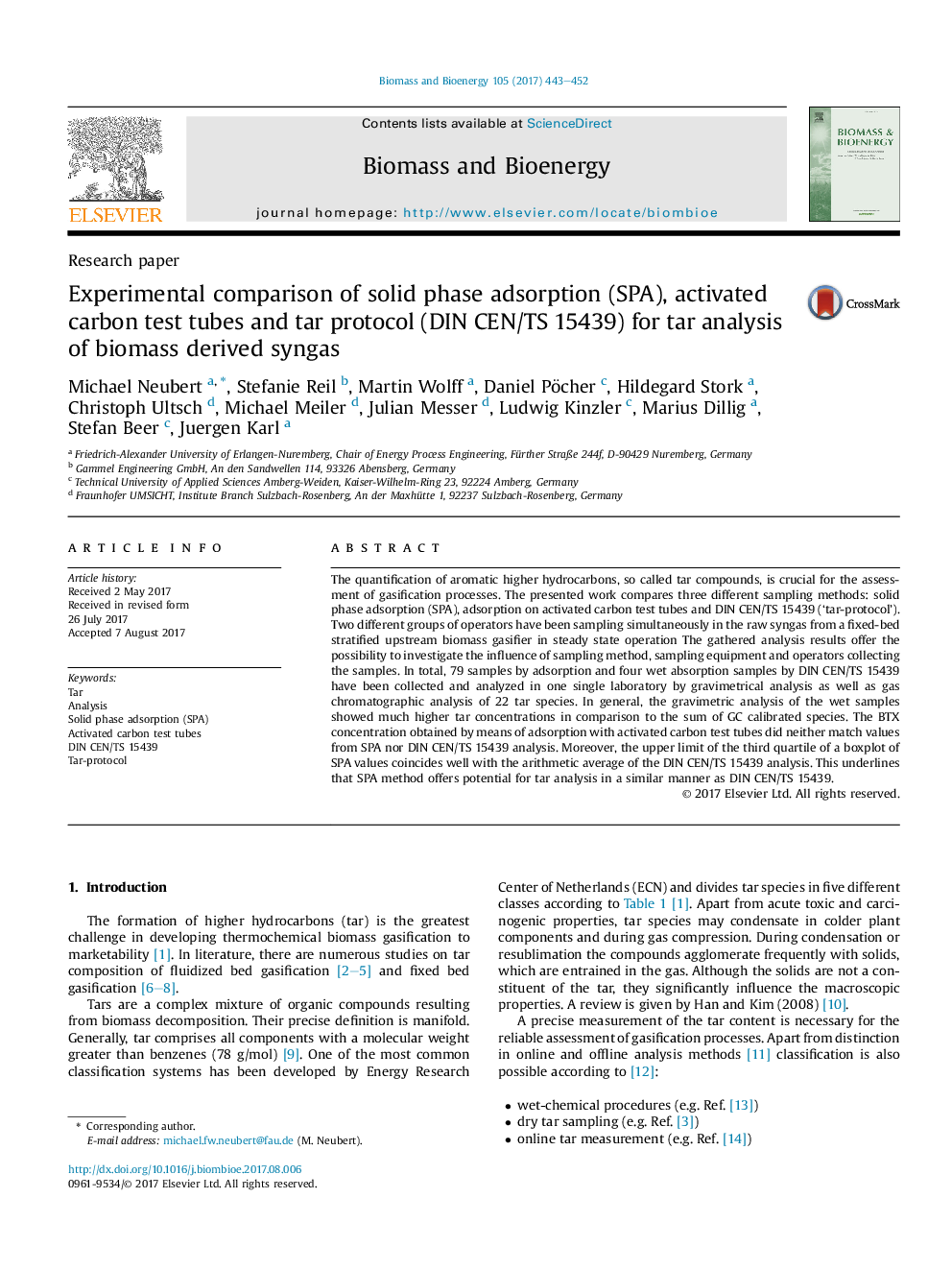| Article ID | Journal | Published Year | Pages | File Type |
|---|---|---|---|---|
| 4996182 | Biomass and Bioenergy | 2017 | 10 Pages |
Abstract
The quantification of aromatic higher hydrocarbons, so called tar compounds, is crucial for the assessment of gasification processes. The presented work compares three different sampling methods: solid phase adsorption (SPA), adsorption on activated carbon test tubes and DIN CEN/TS 15439 ('tar-protocol'). Two different groups of operators have been sampling simultaneously in the raw syngas from a fixed-bed stratified upstream biomass gasifier in steady state operation The gathered analysis results offer the possibility to investigate the influence of sampling method, sampling equipment and operators collecting the samples. In total, 79 samples by adsorption and four wet absorption samples by DIN CEN/TS 15439 have been collected and analyzed in one single laboratory by gravimetrical analysis as well as gas chromatographic analysis of 22 tar species. In general, the gravimetric analysis of the wet samples showed much higher tar concentrations in comparison to the sum of GC calibrated species. The BTX concentration obtained by means of adsorption with activated carbon test tubes did neither match values from SPA nor DIN CEN/TS 15439 analysis. Moreover, the upper limit of the third quartile of a boxplot of SPA values coincides well with the arithmetic average of the DIN CEN/TS 15439 analysis. This underlines that SPA method offers potential for tar analysis in a similar manner as DIN CEN/TS 15439.
Related Topics
Physical Sciences and Engineering
Chemical Engineering
Process Chemistry and Technology
Authors
Michael Neubert, Stefanie Reil, Martin Wolff, Daniel Pöcher, Hildegard Stork, Christoph Ultsch, Michael Meiler, Julian Messer, Ludwig Kinzler, Marius Dillig, Stefan Beer, Juergen Karl,
